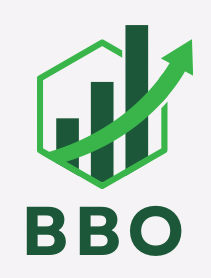
Picking a niche is like laying down the foundation for your online business. It sets the stage for everything that follows, from your marketing strategies to your product offerings. A solid niche gives you a good grip on the market and invites customers who are genuinely interested in what you offer.
Researching a market gap involves a bit of detective work. You need to dig around and figure out what’s missing in the market or something that could be improved. Look into online forums, social media trends, customer reviews, and even your own experiences to spot these gaps. Keep your ears to the ground and listen to what people are chatting about.
Competitor analysis might sound fancy, but it’s about checking out what your competition is up to. Use online tools to see which products are currently on-trend and who’s killing it out there. Understanding their strengths and weaknesses can give you an edge. Tailor your offerings to stand apart and address any gaps they might leave unfilled.
Mixing passion with business sounds like a dream, doesn’t it? But it totally works. Your interests, coupled with your unique skills, can align with what the market needs. When your passion meets market demand, magic happens. You not only enjoy what you do, but you also foster a community that resonates with your brand’s mission.
Having a defined niche can boost brand loyalty. When you cater to a specific audience precisely, they’re more likely to keep coming back. This focus helps build a strong identity which is crucial in today’s crowded online space. Plus, it sets you apart from the generic crowd, allowing you to charge premium prices for unique value.
Building Your Online Presence – Crafting a Professional and User-Friendly Digital Storefront
Creating an awesome online presence starts with a website that’s easy on the eyes and brain. Think of it as your digital home. A sleek design helps attract visitors, but ease of navigation keeps them sticking around to explore. Mobile optimization isn’t optional anymore—it’s a must. People are shopping on the go, so your site needs to look just as good on a phone as it does on a desktop.
Choosing the right e-commerce platform can feel like picking a place to set up shop. Whether it’s Shopify, WooCommerce, or another player on the block, each platform has its perks and quirks. Consider things like user-friendliness, payments, and growth potential when making your pick. And don’t forget to compare pricing structures to avoid any future surprises.
SEO might sound like a techie thing, but it’s just about doing small things right to make your shop visible online. Craft your product descriptions with care, using keywords naturally where they fit. Think of SEO as making life easier for search engines to find you and lead people your way.
Content isn’t just king; it’s the whole royal family. Whether it’s blog posts, videos, or product photos, every piece should tell a story that engages and informs. Share tips, answer questions, and solve problems your audience might face. This not only helps with SEO but also positions you as a go-to authority in your niche.
User experience (UX) boils down to how someone feels when interacting with your site. Customer journey mapping helps understand this path. Make everything from product discovery to checkout as seamless as possible. When people can easily find what they’re looking for and check out smoothly, they’re more likely to come back for more.
Implementing a Solid Marketing Strategy – Reaching Your Target Audience Efficiently
Marketing is your roadmap to getting the word out about your online business. With digital marketing in play, you have a multitude of avenues to reach and engage your audience without being bound by geography. It’s the game changer for any online venture.
Social media is where your brand can really shine, not just to advertise but to build relationships. Whether it’s Instagram, Facebook, or a newer platform catching the wave, these channels are powerful for showcasing your products and engaging in real-time conversations. Authenticity is key here—people connect with stories and personalities, more than with polished ads.
Email marketing might sound old school, but it’s a timeless strategy with impact. Building a strong subscriber list gives you a direct line to your audience’s inbox, where you can nurture relationships with personalized content. Announcing sales or sharing newsletter updates keeps your brand fresh in their minds.
SEO stretches beyond the basics when you start looking into keywords and backlinks, but don’t let it overwhelm you. Analyzing what works through tools like Google Analytics gives insights into your audience’s behavior. It’s about playing the long game, ensuring your business is discoverable when folks are searching for what you offer.
Storytelling helps your brand carve out a unique space in a crowded market. People want to support brands they feel connected to and trust. Share your journey, your values, and how your product fits into their lives. Creating this narrative builds a loyal community that sticks with you through the ups and downs.
Analyzing and Optimizing – Ensuring Sustained Growth and Success
Running a successful online business isn’t just about the launch. It’s what you do afterwards that keeps the wheel spinning. Keeping an eye on key performance indicators (KPIs) helps you measure what’s working and what needs a little tweaking. Things like conversion rates, customer acquisition costs, and average order values are good places to start.
Analytics tools are your best friends here. They’re like having a backstage pass to see how folks interact with your site. By understanding customer behavior, you can adjust what you offer or how you run your campaigns, making your business better aligned with needs and demands.
Feedback isn’t just nice to have; it’s gold. Customers have firsthand experience with your goods and services, so take their opinions seriously. Surveys and reviews can uncover hidden problems and, when acted upon, turn a dissatisfied buyer into a loyal fan.
Scaling your business doesn’t mean losing the personal touch. Exploring new markets or expanding product lines could be on the agenda, but doing so while maintaining quality and service is the secret sauce. Think about partnerships or technologies that can help you grow without adding too much strain.
Technology and trends don’t sit still, and neither should you. Stay ahead of the curve by continuously adapting. Whether it’s a new social media channel or an e-commerce tool, keep experimenting to see what clicks best with your audience. Evolution is key to remaining relevant in a world that doesn’t stop changing.

